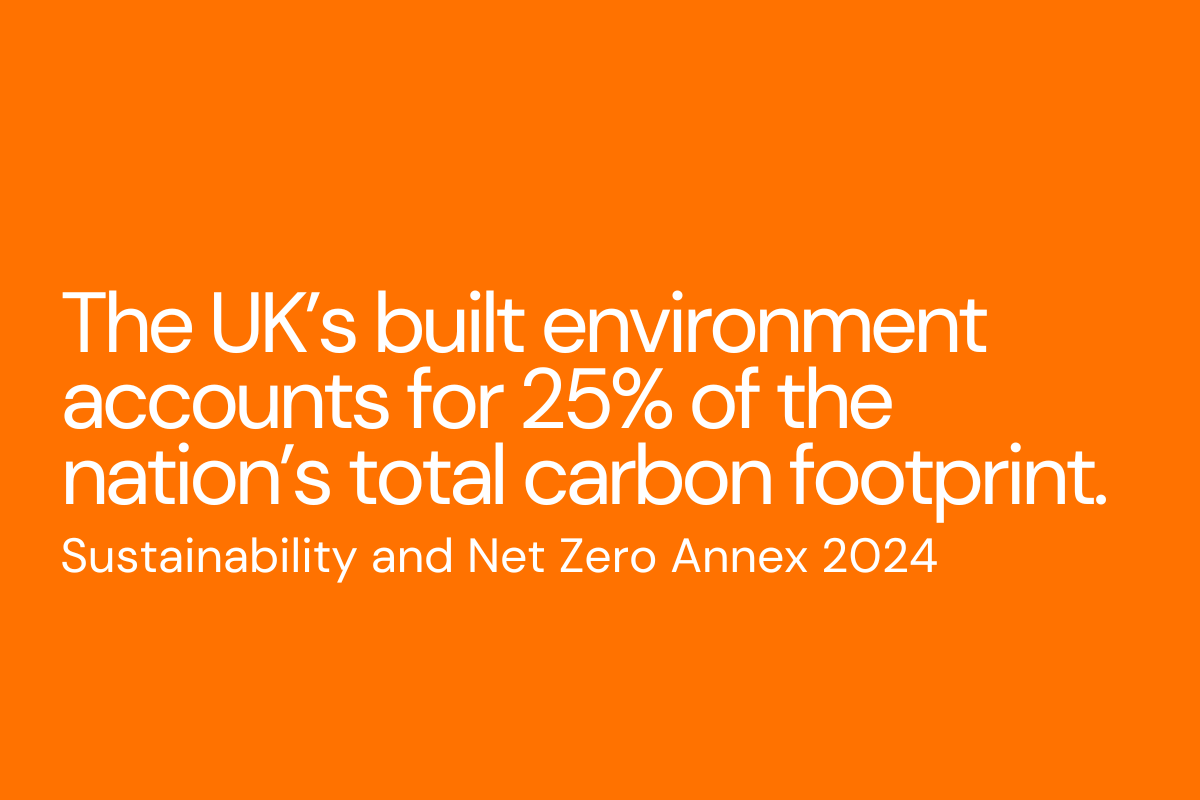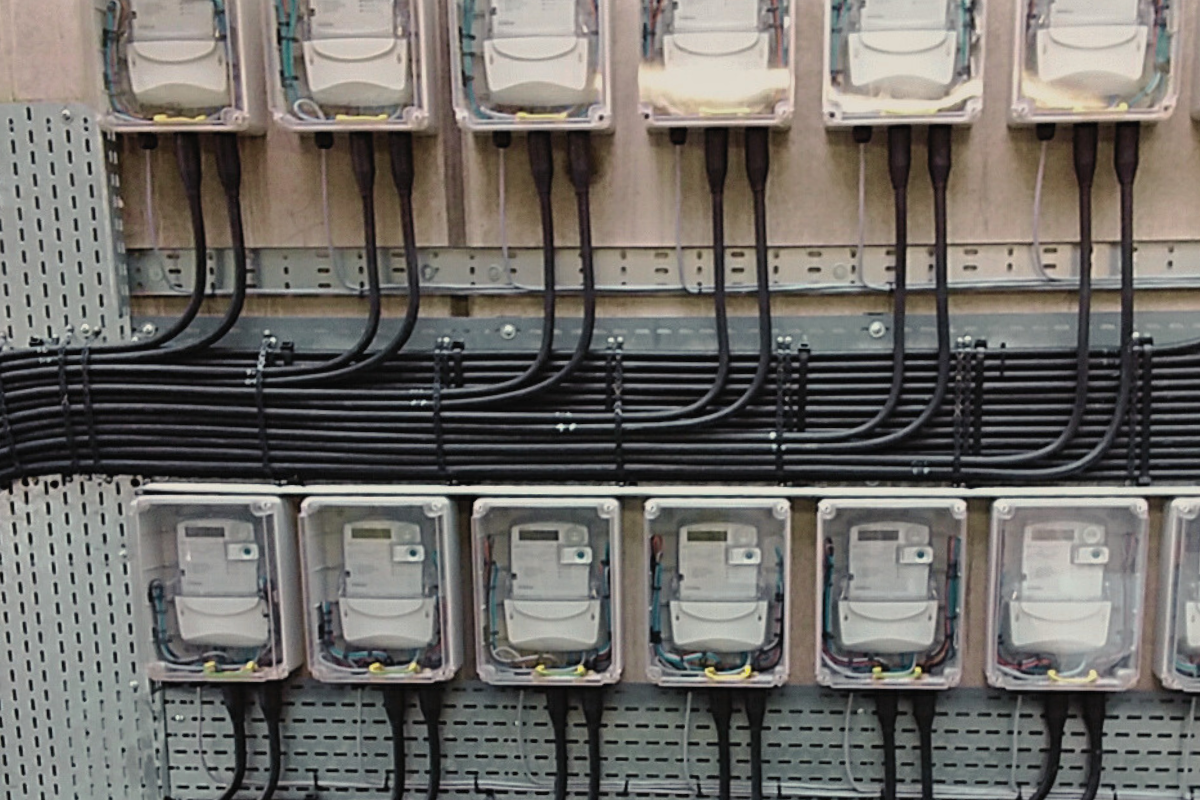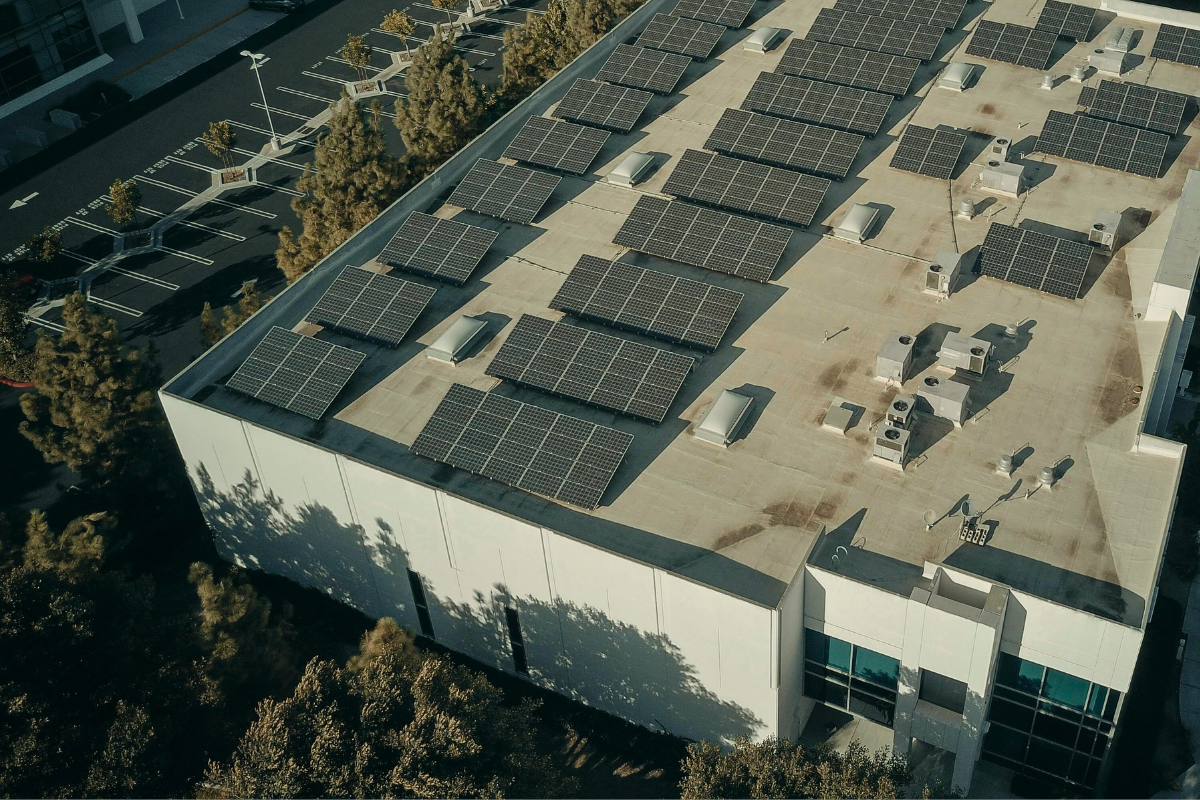The commercial property landscape is at a crossroads. With rising energy costs and the urgent push toward net zero, building owners and facilities managers must rethink their approach to sustainability. The UK’s built environment accounts for 25% of the nation’s total carbon footprint, making it a critical sector for achieving net zero targets?.

How can commercial buildings reduce their environmental impact without incurring the financial and environmental costs of demolition and new construction? The answer lies in sustainable retrofitting, which is a strategic upgrade of existing buildings to improve their energy efficiency, carbon footprint, and operational performance.
Retrofitting involves making targeted improvements to a building’s infrastructure, from upgrading insulation and installing energy-efficient HVAC systems to integrating renewable energy sources such as solar panels? These interventions not only reduce operational costs but also align with the UK’s Minimum Energy Efficiency Standards (MEES), which now require landlords to ensure commercial properties meet a minimum EPC rating of E or better.
A recent report from the National Engineering Policy Centre (NEPC) highlights that energy retrofits create healthier indoor environments, enhance property value, and reduce long-term maintenance expenses. For building owners, this means greater compliance, lower running costs, and a competitive edge in the commercial real estate market.
A retrofit can include:

These interventions not only reduce carbon emissions but also increase the lifespan of commercial properties, making them more attractive to investors, tenants, and corporate occupiers looking for sustainable workspaces.
A successful retrofit isn’t just about installing new technology - it requires a strategic, phased approach to ensure maximum energy savings and long-term performance. The Centre for Sustainable Energy (CSE) highlights three essential stages for an effective retrofit, helping you make informed, cost-effective decisions.
Before investing in major upgrades, the first step is minimising energy waste. Simple measures like sealing draughts, optimising heating controls, and adopting smart operational practices can significantly cut energy consumption. Ensuring that lights, equipment, and HVAC systems aren’t running unnecessarily also plays a key role in reducing demand, making future upgrades more efficient and cost-effective.
Once energy waste is under control, the focus shifts to improving the building’s structure to retain heat and reduce reliance on mechanical systems. Adding insulation to walls, roofs, and floors, upgrading to double or secondary glazing, and replacing outdated HVAC systems all contribute to lower energy bills and improved thermal performance. These upgrades ensure that any future renewable energy investments are not wasted due to poor heat retention.
Only after reducing demand and improving efficiency should landlords consider low-carbon energy solutions. Installing solar panels for onsite electricity generation, switching to air-source or ground-source heat pumps for heating and cooling, and integrating battery storage systems all contribute to a greener, more self-sufficient building.

By following this step-by-step approach, commercial buildings can achieve higher energy efficiency, lower operational costs, and better long-term sustainability without unnecessary investment in oversized renewable systems. Smart retrofitting means making the right changes at the right time - ensuring that every upgrade delivers tangible benefits, both financially and environmentally.
Every commercial building has its own quirks - whether it’s a listed property with strict planning constraints or a modern office block with fluctuating occupancy. That’s why there’s no one-size-fits-all approach to retrofitting. The key to a successful upgrade is making informed decisions based on real data, ensuring that every improvement makes a measurable difference in energy efficiency, cost savings, and long-term asset value.
Today, digital platforms are making this process easier. These tools pull together key data, like energy performance ratings, occupancy patterns, environmental metrics, and even AI-driven energy models, to help building owners and managers pinpoint the most effective retrofit measures. Some platforms even map out expected costs, projected savings, and return on investment, giving a clear picture of what’s worth prioritising.
But data is only part of the picture - understanding the balance between active and passive retrofit strategies is just as important. Passive upgrades, like better insulation, improved glazing, and shading systems, help reduce the energy a building needs in the first place. Meanwhile, active solutions, such as heat pumps, smart HVAC systems, and onsite renewable energy, improve how efficiently that energy is used. The most effective retrofits combine both approaches, ensuring long-term efficiency without unnecessary costs.
Having a clear, data-backed plan ensures retrofits are practical, profitable, and future-proof.
For landlords and commercial property managers, the decision to retrofit is not just about sustainability - it’s about financial security, asset value, and tenant retention.
Buildings that fail to meet modern energy efficiency standards risk becoming stranded assets - difficult to lease, expensive to maintain, and less attractive to buyers. Retrofitting ensures your property remains compliant, desirable, and competitive in an increasingly ESG-focused market.
While retrofitting requires an upfront investment, several financial schemes and incentives make the transition easier:
Regulatory changes are making inefficient buildings increasingly cost-prohibitive. Under the MEES regulations, commercial properties with an EPC rating below ‘E’ cannot be leased legally?. By 2030, this requirement is expected to tighten to an EPC rating of ‘B’ or better, meaning landlords who fail to act now may face legal restrictions on leasing, fines and penalties, and decreased asset value.
Corporate tenants are increasingly prioritising sustainability in their office spaces. Retrofitted buildings with energy-efficient systems and lower operational costs are significantly more attractive to businesses aiming to meet their own ESG commitments.
→ Learn more about why it is crucial to pay attention to energy management here.
Sustainable retrofitting isn’t just a trend, it’s the future of commercial real estate. With net zero deadlines looming and ESG mandates tightening, building owners must act now to secure their assets’ long-term viability.
What is sustainable retrofitting, and how does it contribute to climate adaptation?
Sustainable retrofitting involves upgrading existing buildings with environmentally friendly technologies and materials to improve energy efficiency and reduce carbon emissions. This process enhances a building's resilience to climate change by integrating features like improved insulation, energy-efficient windows, and renewable energy systems.
Why is retrofitting existing buildings important for achieving net-zero targets?
Retrofitting is crucial because the construction and operation of buildings contribute significantly to global carbon emissions. By improving the energy efficiency of existing structures, we can substantially reduce emissions and progress towards net-zero goals.
What are the key considerations when planning a sustainable retrofit?
Important factors include assessing the building's current energy performance, understanding its structural limitations, selecting appropriate energy-efficient technologies, considering the use of sustainable materials, and evaluating the financial implications and available incentives.
Are there financial incentives available for retrofitting projects in the UK?
Yes, various financial incentives exist, such as government grants, tax relief schemes, and programs like the Energy Company Obligation (ECO) scheme, which offers funding for energy efficiency improvements in eligible homes.
How does retrofitting improve a building's resilience to climate change?
Retrofitting enhances resilience by incorporating features that help buildings withstand extreme weather events, such as improved insulation to maintain internal temperatures during heatwaves or cold spells, and flood-resistant materials to mitigate water damage.
Can retrofitting be applied to historic or listed buildings?
Yes, but it requires careful planning to balance preserving the building's historical significance with implementing energy efficiency improvements. Consulting with conservation specialists and adhering to guidelines from organizations like Historic England is essential.
What is the difference between a deep retrofit and a standard retrofit?
A deep retrofit involves comprehensive upgrades that significantly reduce a building's energy consumption, often aiming for near net-zero energy use. In contrast, a standard retrofit may include more superficial improvements that achieve moderate energy savings.
How long does a typical retrofit project take to complete?
The duration varies depending on the project's scope, the building's size, and the complexity of the upgrades. A simple retrofit might take a few weeks, while a deep retrofit could span several months.
What are the potential challenges of retrofitting older buildings?
Challenges include dealing with outdated construction methods, structural issues, the presence of hazardous materials like asbestos, and ensuring that new systems are compatible with existing ones.
How can I determine if my building is suitable for retrofitting?
Conducting an energy audit or building assessment with a qualified professional can help identify opportunities for improvement and determine the feasibility of retrofitting measures.
Karsons Consulting are members of the Chartered Institute of Building Services Engineers, The Association of Consultancy and Engineering, British Institute of Facilities Managers and the Building Services Research and Information Association.